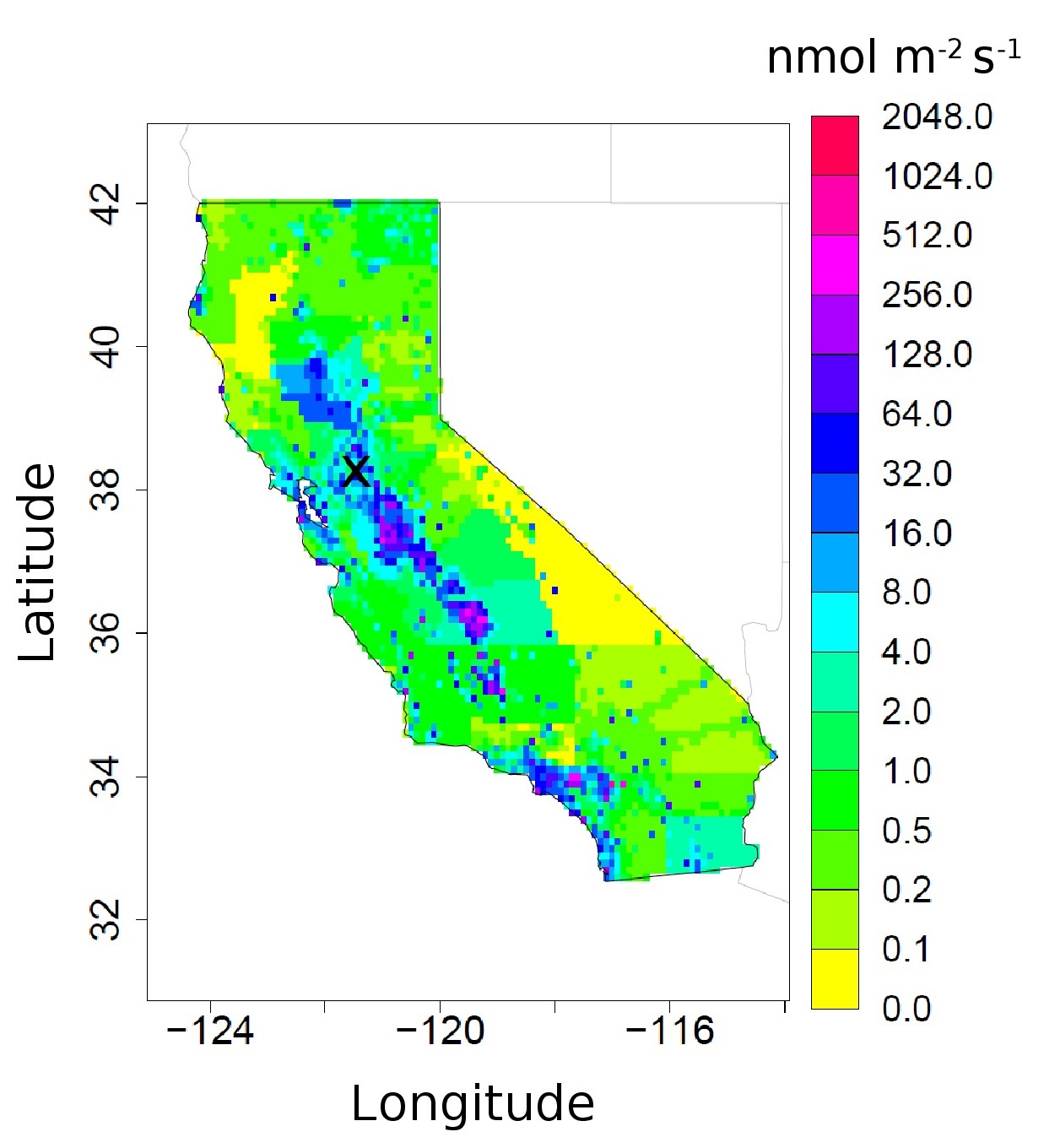Researchers recently combined highly accurate methane measurements from a tower with model predictions of expected methane signals to revise estimated methane emissions from central California. They found that annually averaged methane emissions in California were 1.5 to 1.8 times greater than previous estimates, depending on the spatial distribution of the methane emissions.
At those levels, methane would account for 9 percent of the state’s greenhouse gas emissions, compared to the current estimate of 6 percent. Both the research findings as well as the methodology are important if California is serious about improving air and the environment and not just doing faddish campaigns against CO2. Under a law known as AB 32 California has a mandate to reduce greenhouse gas emissions to 1990 levels by 2020, but the law is designed to ration CO2 emissions. It won't be much good if methane levels instead rise.
Methane is a potent though short-lived greenhouse gas, with a 10-year atmospheric lifetime, which traps about 70 times more heat than carbon dioxide per unit mass when averaged over a 20-year timescale. Carbon dioxide can stay in the atmosphere for up to 100 years and black carbon (soot) is another major short-lived climate pollutant. Methane has numerous natural sources of emission, such as wetlands and the decomposition of organic matter, and the current study does not have a way of separating natural sources from anthropogenic ones.

Methane in California. Credit: Lawrence Berkeley National Lab
Attention has increasingly turned to these short-lived pollutants, since actions to reduce their emissions will yield a faster climate response than reducing carbon dioxide emissions. In February the United States launched the Climate and Clean Air Coalition to Reduce Short-Lived Climate Pollutants, which the G8 has just agreed to join.
The study started with measurements taken in 2008 from a 2,000-foot tower in Walnut Grove, California, near Sacramento. “The instruments on the tower measure the complete suite of greenhouse gases, ranging from CO2—including just the fossil fuel fraction of the CO2—to methane, nitrous oxide and halocarbon gases, or refrigerants,” Berkeley Lab scientist Marc L. Fischer.
Measurements were taken hourly and then compared with a transport model of large-scale airflows over the earth with a high spatial and temporal resolution. This allowed the scientists to essentially track where the air came from; they used NOAA measurements of the background methane to estimate the methane concentrations entering California.
As part of the study, errors associated with the wind model were quantified by comparing predicted values to actual values; those errors were then run through the entire model to quantify any errors in the emissions estimate. Since Fischer and post-doc Seongeun Jeong did the analysis for this paper, they have begun a new collaboration with the California Air Resources Board (CARB) to include data from five additional towers throughout California’s Central Valley set up by CARB.
CARB needs it. They are rather famous for exaggerating pollution estimates by 340%.
Further analysis on the additional data supported their initial results. “We are fairly confident that our measurements in the Central Valley capture about 90 percent of California’s emissions,” Fischer said.
Published in the Journal of Geophysical Research.




Comments